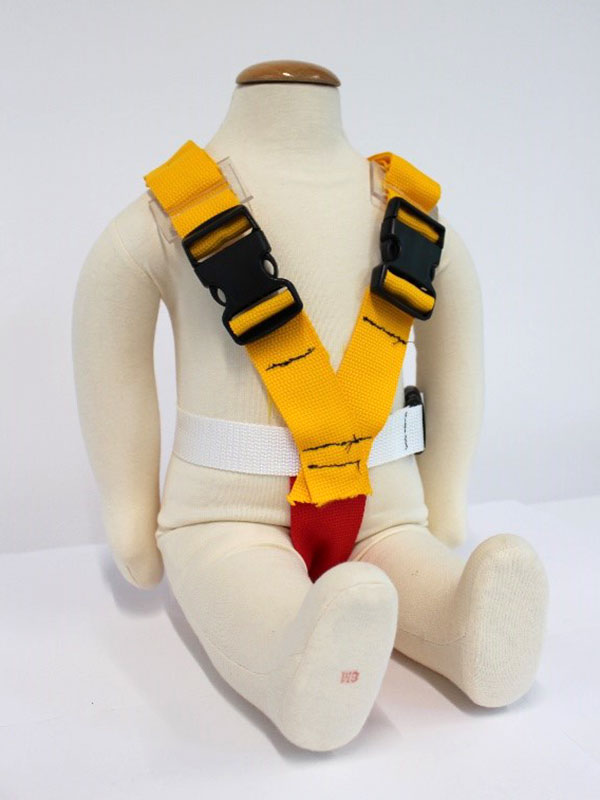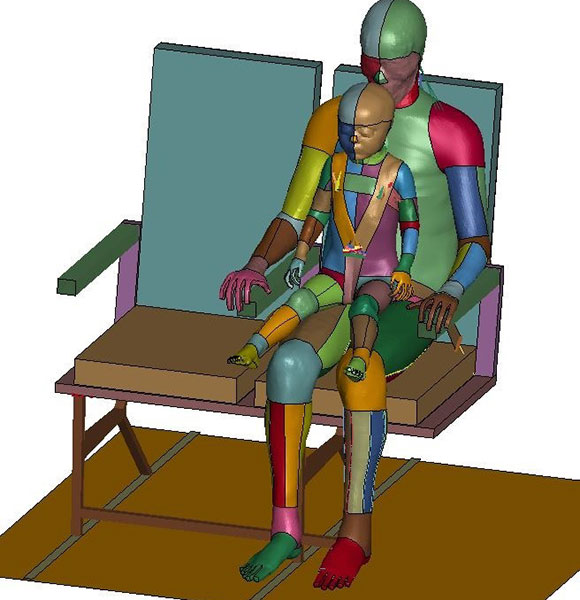Human body modeling of infants — restraint systems in airplanes


Human body modeling has been used to optimize the restraint system for babies currently in use in the European airspace.
Loop belts are currently required in European airspace as a minimum safety standard for buckling up children under 24 months of age. With this system, the infant is placed on the lap of the adult person and “secured” to that person’s lap belt by an additional belt buckled around the abdomen. This double seat occupancy offers economic advantages for the travelers and ecological advantages due to the higher utilization of the aircraft. However, it is not optimal from a safety point of view, because in the event of an emergency landing, dangerous stresses can act in the abdominal area of the child. In this context, an alternative restraint system for dual seat occupancy was developed at Fraunhofer EMI with the aim of achieving a better distribution of forces on the child’s body in the event of an emergency landing.
Human body modeling was used to investigate the kinematics and induced loads on the child and accompanying person during a normalized deceleration. For this purpose, THUMS virtual human body models were used for the child and adult person.
The simulation showed that although the new concept significantly reduced the loads on the child’s abdominal region, a collision between the child’s and adult’s bodies could not be prevented due to the change in body kinematics. These results show that, for safety reasons, a separate seat with a dedicated restraint system is preferable to dual seat occupancy for children.